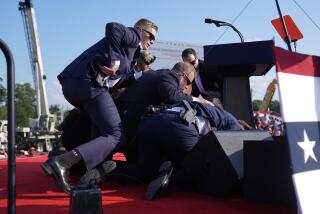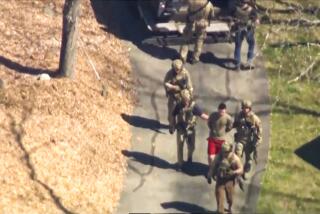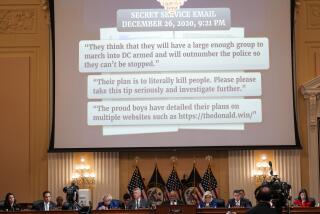Marines Had Secret Safe Combinations : Penetration Easier for KGB Agents--Intelligence Sources
- Share via
WASHINGTON — Marine guards at the U.S. Embassy in Moscow were provided with combinations for all secure rooms and safes, making the penetration of sensitive areas much easier for KGB agents alleged to have prowled the building at night, intelligence sources said today.
Rooms in which CIA and Defense Intelligence Agency operatives worked, as well as the communications vault, were closed at night by steel doors with combination locks, said one intelligence source, who spoke on condition of anonymity.
A State Department source also said that until 1983, a code expert was stationed in the communications vault 24 hours a day, but that after that, no one was assigned to the room between midnight and 6 a.m., another development that would make it easier for the KGB to penetrate the area.
State Department officials said budget cuts, personnel reductions and the introduction of more sophisticated technology were behind the decision in 1983 not to staff the communications vault around the clock.
‘Tamper-Proof Containers’
“Having somebody in that vault would have kept (the KGB) out of there, and maybe out of the whole closed area,” said an intelligence source, referring to the upper three floors of the embassy, where diplomats and intelligence agents handle classified material.
The two Marines assigned to guard the embassy at night were equipped with the combinations for all the locks, in the event of fire, State Department officials confirmed.
One State Department official said the combinations were in “tamper-proof containers” but acknowledged that it might be easier to open such a container and gain access to all combination locks in the embassy than to attempt to open the safes one by one.
Two of the most important intelligence losses from the alleged penetration of the old U.S. Embassy in Moscow could have been the identities of Soviet citizens cooperating with the United States and the codes and design of coding machines used for classified communications between the embassy and Washington, according to Administration officials.
Although information that could have helped the KGB learn the identities of Soviet CIA and DIA agents was coded, an intelligence source said, “once they got the documents, they would have had all the time in the world to break those codes. That would just about put us out of business.”
Justice Dept. Action
At least five Soviets working with U.S. intelligence have disappeared since two Marine guards allegedly let the KGB into the embassy, according to other sources, although it is unclear whether they were compromised by the loss of documents or by the defection of former CIA agent Edward Howard.
In a related development, Atty. Gen. Edwin Meese III said today that the Justice Department is looking into whether State Department personnel could be prosecuted for criminal negligence in the Marine guard espionage scandal.
More to Read
Sign up for Essential California
The most important California stories and recommendations in your inbox every morning.
You may occasionally receive promotional content from the Los Angeles Times.










